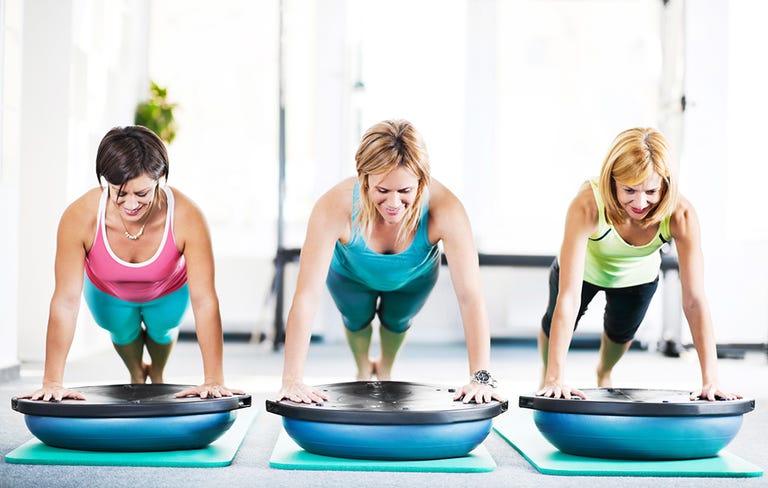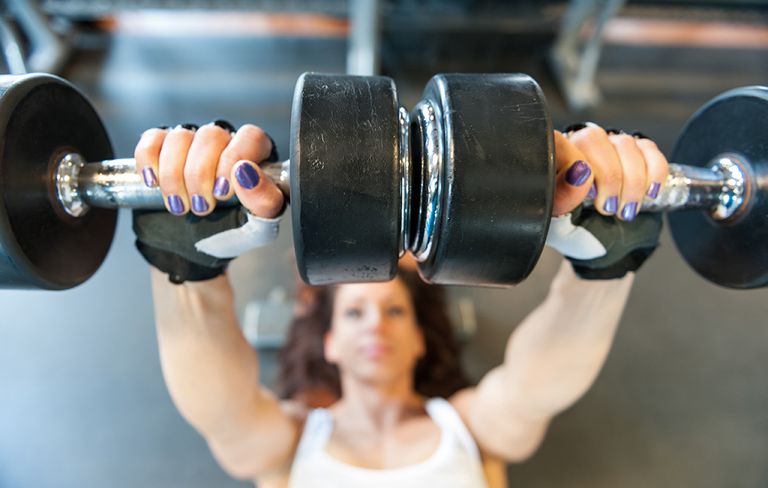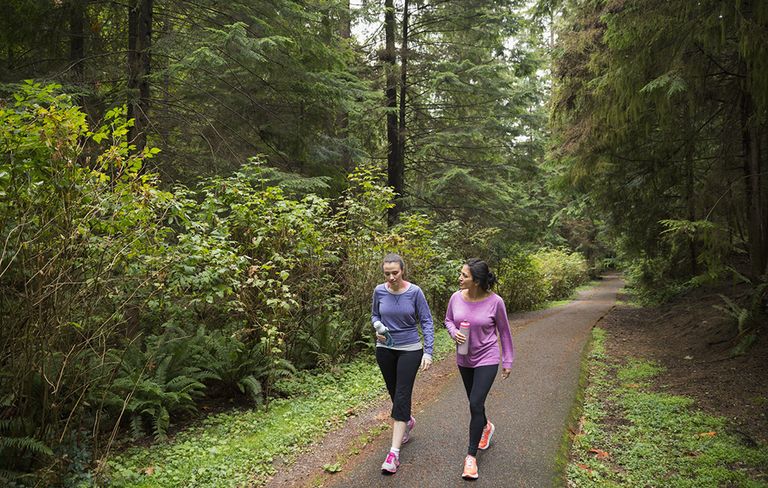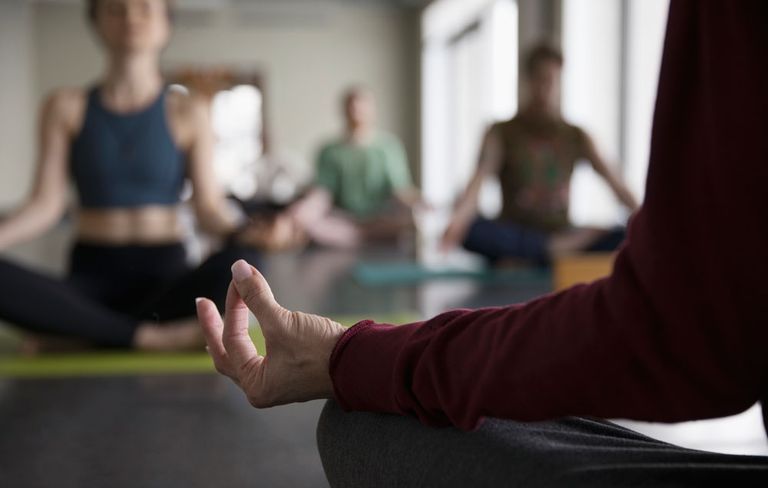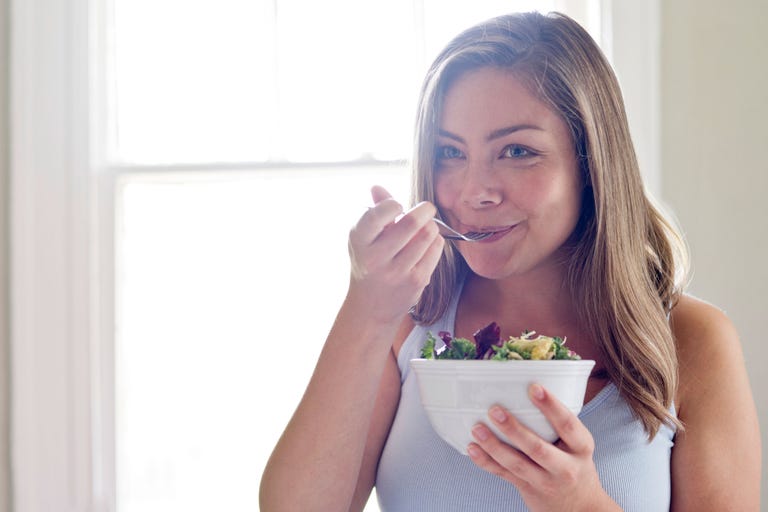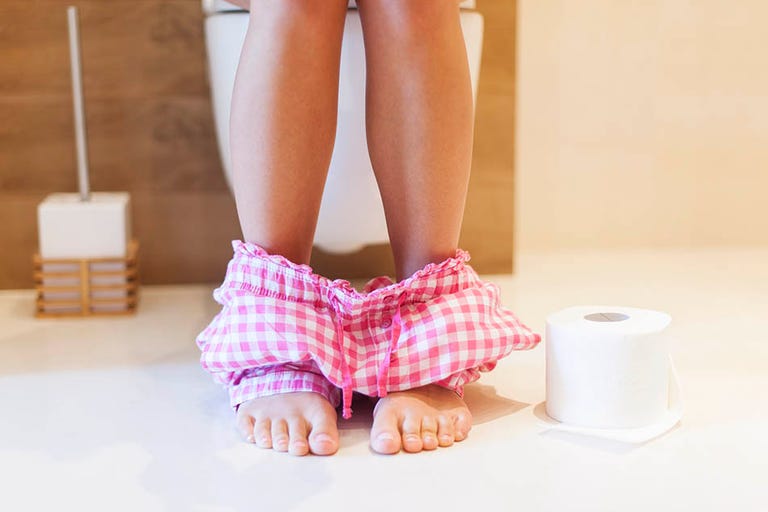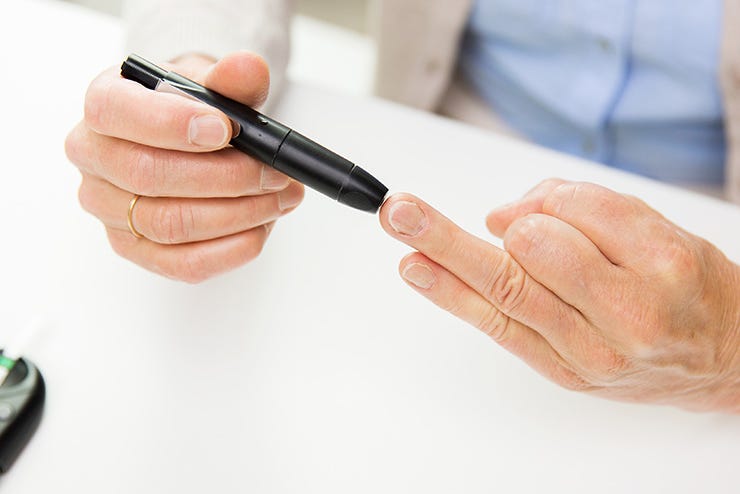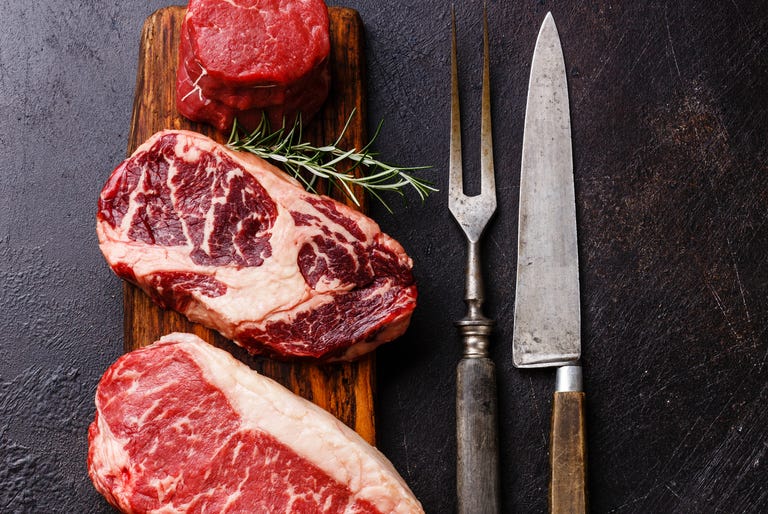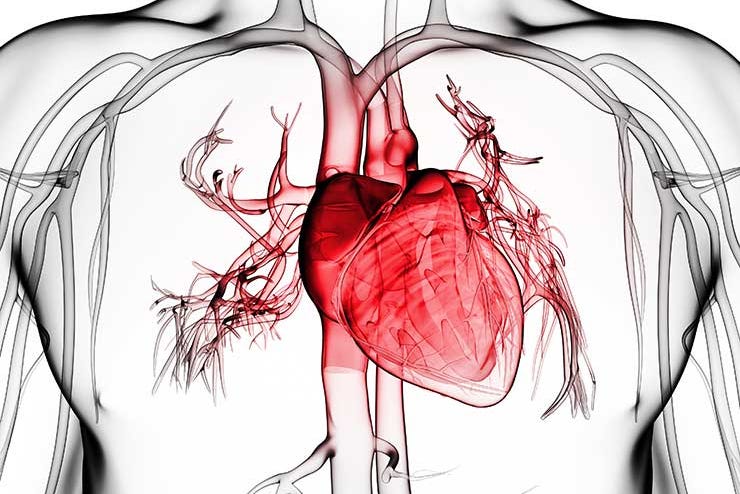When we set out to lose weight, many of us focus on getting a toned, flat stomach first. After all, it's motivating when you find yourself slipping into jeans that haven't fit you in years, and the compliments that come flying your way can help you stick to your healthy eating and exercise routines. What's more, losing fat around your middle is a surefire way to improve your health: Research links larger waist size to heart disease, diabetes, and even some cancers.
However, if you think you'll be successful "spot treating" your belly fat with crunches, think again, says Julie Buckley, a UK-based personal trainer, and author of Ignite: 4 Weeks to a Leaner, Faster, and Hotter Body. "There are a few key exercises you can incorporate into your workout routine that are effective at burning fat from the belly and the rest of your body," she says. Here, Buckley and other personal trainers share their favorite belly fat-blasting workouts that'll help you whittle your middle—fast.
Run on an incline.
Running at an incline rather than on a flat surface has been shown to increase total calorie burn by as much as 50%, says Jill Penfold, a Los Angeles-based personal trainer. Whether you're outside on a hill or at the gym on an inclined treadmill, start out walking for 5-10 minutes, then jog, suggests Penfold. "Your heart rate should elevate pretty quickly as you pick up your pace," she says. Maintain the jog for 5-10 minutes, then pick your pace up again and start running. "This doesn't have to be an all-out sprint," says Penfold, but you should be working hard enough that you couldn't have a conversation with someone running next to you. Spend 5 minutes running, then drop your pace back down to a jog. Continue alternating 5-10 minutes of jogging with 5-10 minutes of running for 30-45 minutes.
Use the rowing machine.
Just because you may not have access to open water—or a crew team—doesn't mean you can't work this fat-blasting cardio workout into your go-to gym routine. Not only does rowing get your heart rate way up, which helps you blast calories and burn fat, but it also works muscles in your legs, core, arms, shoulders, and back that you may not be used to using, which "surprises" your body and helps you increase muscle, says Penfold. She recommends this belly fat-blasting circuit, which is great for beginners and pros alike: Begin with 20 seconds of rowing followed by 10 seconds of rest, and look at how many meters you traveled in that time. (Don't get off the rowing machine or even let go of the handle when you rest, says Penfold.) Repeat this eight times, trying to beat your distance each time. When you're finished with this 4-minute circuit, row a fast 500 meters and note how long it takes you. "That's the number you'll want to match or beat during your next rowing session," says Penfold.
Add high-intensity interval training (HIIT) to your go-to routine.
While the old thinking was that long, steady-state cardio sessions were best for burning fat, we now know that intense, fast-paced cardio is much more effective, says Buckley. "For maximum fat-burning and body-sculpting results, you need varied, intense workouts that include short intervals which leave you totally spent," she says. Researchers hypothesize that this contributes to your body's "after-burn" effect, where you continue to burn calories long after your workout is finished. Hope Pedraza, an ACSM personal trainer and the creator of inBalance, a San Antonio-based fitness and wellness studio, suggests doing intervals that alternate between exercises that work different muscle groups. After a 10-minute warm-up, spend 30 seconds doing as many reps as possible of squats, push-ups, kettlebell swings, and single-arm rows. In fact, choose any of your favorite exercises—just make sure you alternate between exercises that work different muscle groups, which will help certain muscles recover while you work others, letting you amp up the intensity and minimize the amount of rest you need.
Intensify your plank using a BOSU ball.
You know that your cardio sessions are crucial when it comes to burning the layer of fat sitting on top of your abdominal muscles. But it's still important to work those abs even as you're trying to shed fat, says New York City-based personal trainer Adam Sanford, founder of Adam Sanford Fitness. His favorite move to do that? Holding plank on a BOSU ball. "It's more challenging than a normal plank where your hands are on the floor, because the BOSU tests your balance," says Sanford. "When your body tries to find control as your balance is challenged, your abs, obliques, and deep transverse abdominal muscles are activated." Strengthening these core muscles also helps increase your metabolism, ultimately helping you to burn more calories and fat.
Lift heavier weights and rest less between reps.
If you've been lifting moderately-heavy weights but are still looking to drop belly fat, it's time to pick up the intensity by using heavier weights and cutting down on rest time between reps, says Tyler Spraul, CSCS, a certified strength and conditioning specialist and the head trainer at Exercise.com. "Lifting heavy is where you see more 'afterburn effect,'" says Spraul, "where your body continues to burn calories even after you leave the gym." Just be sure that your technique doesn't suffer as you increase your weight, which can lead to injury. If you're new to strength training, these are the 6 best moves to get started.
Walk every day.
Yes, you read that right. Simply walking can go a long way toward helping you shed belly fat, says Sahmura Gonzalez, a master trainer at Crunch in New York City. "It seems so simple, but 45-60 min of brisk walking every day can do wonders for your metabolism," says Gonzalez. "Plus, it ensures that you don't over-train, which can lead to an over-production of cortisol—a stress hormone that's been shown to contribute to belly fat." In fact, if your walking workout helps you unwind after a stressful day or work through emotions that might otherwise rile you up and stress you out, there's a chance it'll help you lower cortisol levels, which in turn can keep belly fat in check, says Gonzalez. And brisk walking is an effective way to drop pounds—including the belly fat that's hiding your abdominal muscles. "One hour of rapid walking a day can lead to 1 pound of fat loss a week," says Gonzalez. "That is significant!"
Or, better yet, walk on an empty stomach.
Exercising in the morning before breakfast can burn up to 20% more body fat than sweating it out after a meal, according to a small British Journal of Nutrition study. When you exercise in a fasted state, your body is forced to burn stored nutrients as fuel. If you go for a run, your body will burn carbs first, because it can’t utilize stored fat quickly enough to keep up with the intensity of the workout. However, if you go for a brisk walk, the body isn’t as desperate for fuel, so it burns stored fat, instead. To reap the belly-flattening benefits, lace up your sneakers as soon as you wake up and hit the pavement. Drinking water during your walk can help ward off hunger and make sure you stay hydrated enough to power through your workout.
Try yoga.
No, getting your ohm on won’t burn as many calories as a hilly run or a Barry’s Bootcamp class, but it can help blunt the secretion of cortisol, a belly-widening stress hormone. In one study, women who did 35 minutes of daily yoga for 12 weeks had less cortisol in their systems during stressful situations than women in the control group. The benefits of this are twofold: Not only can this help ward off the accumulation of belly fat, according to one Yale study, yoga can also help develop mindfulness, a skill that could help you avoid mindless eating. Never done yoga before? Many gyms host beginner classes, and there are also boutique studios that offer smaller, more personalized sessions. After you’ve got a solid foundation, you could even practice at home with the help of Prevention’s Flat Belly Yoga DVD or an exercise streaming service like Daily Burn.





